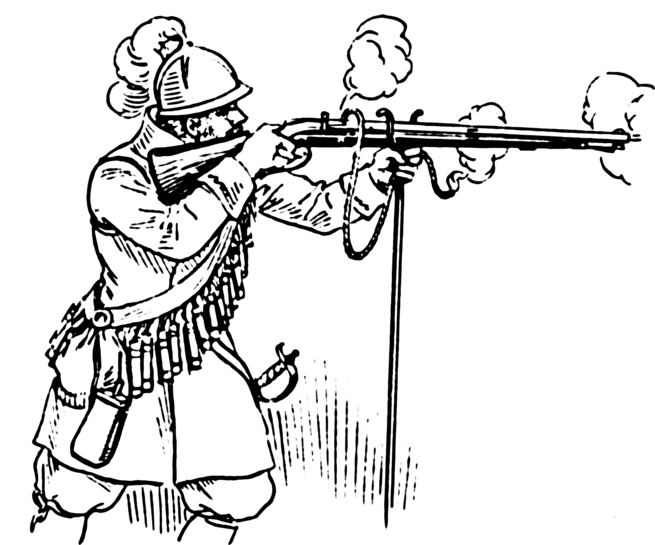
Main Difference
The main difference between Arquebus and Matchlock is that the Arquebus is a long gun of the 15th century and Matchlock is a firearm mechanism
-
Arquebus
The arquebus ( AR-k(w)ib-əs; see § Terminology for synonyms), derived from the German word Hakenbüchse (“hook gun”), was a form of long gun that appeared in Europe and the Ottoman Empire during the 15th century. Although the term arquebus was applied to many different forms of firearms from the 15th to 17th centuries, it originally referred to “a hand-gun with a hook-like projection or lug on its under surface, useful for steadying it against battlements or other objects when firing”. These “hook guns” were in their earliest forms defensive weapons mounted on German city walls in the early 15th century. The addition of a shoulder stock, priming pan, and matchlock mechanism in the late 15th century turned the arquebus into a handheld firearm and also the first firearm equipped with a trigger. The exact dating of the matchlock’s appearance is disputed. It could have appeared in the Ottoman Empire as early as 1465 and in Europe a little before 1475. The heavy arquebus, which was then called a musket, was developed to better penetrate plate armor and appeared in Europe around 1521. Heavy arquebuses mounted on wagons were called arquebus à croc. These carried a lead ball of about 3.5 ounces (100 g). A standardized arquebus, the caliver, was introduced in the latter half of the 16th century. The name “caliver” is derived from the English corruption of calibre, which is a reference to the gun’s standardized bore. The caliver allowed troops to load bullets faster since they fit their guns more easily, whereas before soldiers often had to modify their bullets into suitable fits, or were even forced to make their own prior to battle.
The matchlock arquebus is considered the forerunner to the flintlock musket.
An infantryman armed with an arquebus is called an arquebusier.
-
Matchlock
The matchlock was the first mechanism invented to facilitate the firing of a hand-held firearm. Before this, firearms (like the hand cannon) had to be fired by applying a lit match (or equivalent) to the priming powder in the flash pan by hand; this had to be done carefully, taking most of the soldier’s concentration at the moment of firing, or in some cases required a second soldier to fire the weapon while the first held the weapon steady. Adding a matchlock made the firing action simple and reliable by a single soldier, allowing him to keep both hands steadying the gun and eyes on the target while firing.
-
Arquebus (noun)
.
-
Arquebus (verb)
To shoot with an arquebus.
-
Matchlock (noun)
Early type of firearm, using a smoldering piece of cord to fire the powder in the firing pan.
-
Matchlock (noun)
The gunlock used in such a weapon, having a slow smouldering match, see: slow match.
